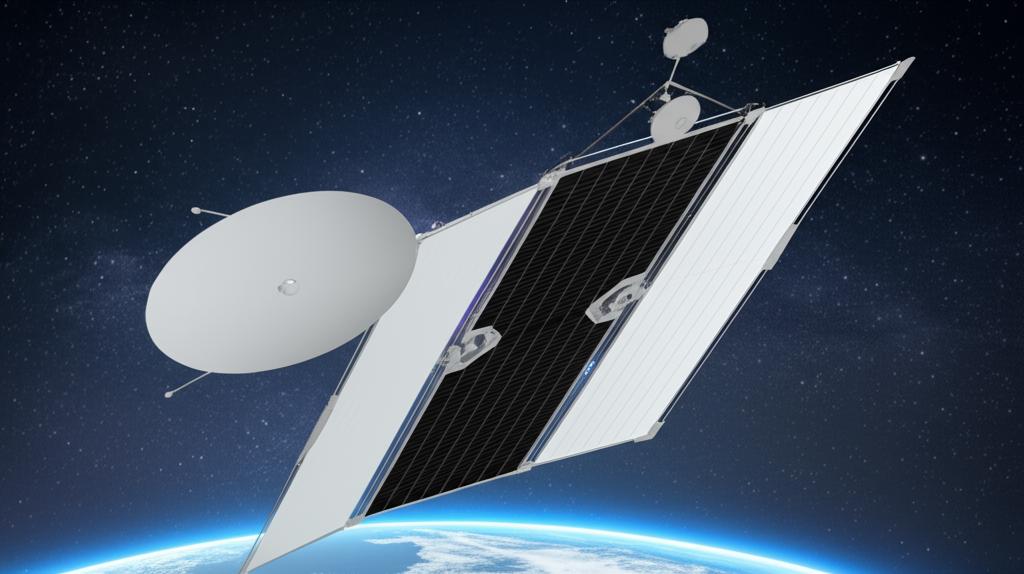Solar sails represent a revolutionary approach to spacecraft propulsion, harnessing the momentum of sunlight itself to travel through space. Unlike conventional rockets that rely on finite propellant, solar sails utilize the constant pressure exerted by photons – particles of light – reflecting off large, thin, mirror-like surfaces. This method offers the potential for long-duration, high-speed missions without the need to carry heavy fuel, opening doors to new kinds of space exploration.
The fundamental physics behind solar sailing involves the transfer of momentum from photons. Although photons have no mass, they carry momentum. When sunlight strikes the reflective surface of a solar sail, the photons bounce off, imparting a tiny amount of momentum to the sail. This continuous push, known as solar radiation pressure, provides a small but constant thrust. While the initial acceleration is slow compared to chemical rockets, this thrust is continuous as long as the sail is exposed to sunlight. Over time, this allows a solar sail craft to achieve very high velocities, potentially exceeding those achievable with traditional propulsion systems for certain missions. The force exerted is greatest near the Sun and diminishes with distance, following the inverse square law. Maneuvering is achieved by precisely controlling the orientation (attitude) of the sail relative to the Sun, angling it to direct the thrust vector, similar to how a sailboat tacks in the wind.
Significant engineering challenges must be overcome to realize the potential of solar sails. Key considerations include:
- Sail Materials and Construction: Sails must be incredibly large (hundreds or thousands of square meters) yet extremely lightweight and thin to maximize acceleration. They need to be highly reflective to capture photon momentum efficiently and durable enough to withstand the harsh space environment, including temperature fluctuations and potential micrometeoroid impacts. Materials like aluminized Mylar or CP1 have been used, and research continues into advanced, thinner, and more resilient materials.
- Deployment Systems: Stowing vast sails into compact volumes for launch and reliably deploying them in space is a major hurdle. Common deployment methods involve lightweight, rigid booms that extend to stretch the sail material taut. Alternatives include spinning the spacecraft to use centrifugal force to unfurl and tension the sail, as demonstrated by Japan's IKAROS mission.
- Structural Integrity: Maintaining the precise shape and flatness of a large, thin sail structure is critical for predictable thrust and control. Thermal expansion and contraction, as well as structural flexibility, can distort the sail shape, impacting performance.
- Attitude Control: Precise pointing of the sail is essential for navigation. Attitude control systems (ACS) must manage the spacecraft's orientation using methods like reaction wheels, thrusters (though minimizing propellant use is ideal), or even by shifting the spacecraft's center of mass relative to its center of pressure. Some designs incorporate small adjustable vanes at the sail tips for fine control.
Recent years have seen significant advancements in solar sail technology, driven by missions testing new materials and deployment concepts:
- Advanced Composite Booms: NASA's Advanced Composite Solar Sail System (ACS3) mission, launched in April 2024, is demonstrating the use of booms made from lightweight polymer and carbon fiber composites. These booms are significantly lighter (up to 75%) and more resistant to thermal warping (experiencing 100 times less distortion) than traditional metallic booms. ACS3 deployed its 80-square-meter sail successfully in August 2024. While a slight bend was observed in one boom during deployment, the mission is providing valuable data on the performance of these next-generation structures, which are scalable for future sails up to 2,000 square meters.
- Spinning Sails: Building on IKAROS's success, startups like Gama are developing missions using centrifugal force for deployment, potentially simplifying the structure by eliminating the need for complex boom systems, especially for very large sails.
- Diffractive Sails: Research is underway on diffractive sails, which use embedded optical gratings rather than pure reflection. This could allow sails to be made of nearly transparent materials and potentially offer more efficient thrust generation and better maneuverability.
- Extreme Solar Sailing: Concepts are being explored that involve sending a solar sail very close to the Sun. The intense sunlight near perihelion would provide a massive acceleration boost, enabling a "slingshot" maneuver to achieve extremely high velocities for rapid transit to the outer solar system or even interstellar space.
While early missions like IKAROS (2010) and The Planetary Society's LightSail 2 (2019-2022) successfully demonstrated basic solar sailing principles and orbit maneuvering, current and future missions aim to push the technology further. ACS3 provides crucial data for designing larger, operational sails. Potential future applications include:
- Station-keeping for space weather warning satellites at Lagrange points.
- Propulsion for near-Earth asteroid reconnaissance missions.
- Low-cost transportation within the inner solar system.
- Enabling unique orbits, like observing the Sun's poles.
- High-speed missions to the outer planets and beyond.
- Interstellar precursor missions, potentially using powerful ground-based lasers for propulsion (beam sailing) as proposed by concepts like Breakthrough Starshot.
Despite advancements, challenges remain. Solar sails inherently provide low thrust, requiring patience for significant velocity changes, especially far from the Sun. They must operate above Earth's significant atmospheric drag (typically above 800 km altitude). The large, delicate structures are vulnerable to damage, and precise attitude control remains complex.
However, the promise of propellant-less propulsion makes solar sailing a key enabling technology for future space science and exploration. By offering potentially unlimited delta-V (change in velocity) fueled only by sunlight, solar sails could make ambitious, long-duration missions more affordable and achievable, ushering in a new era of exploration across the solar system and perhaps, eventually, to the stars.

